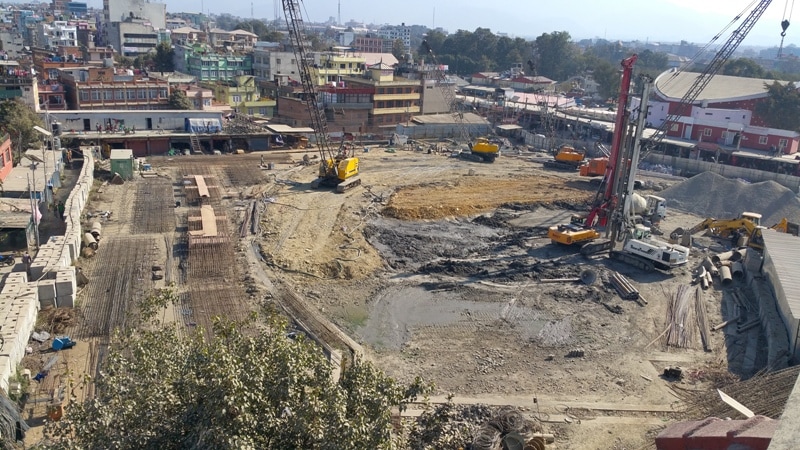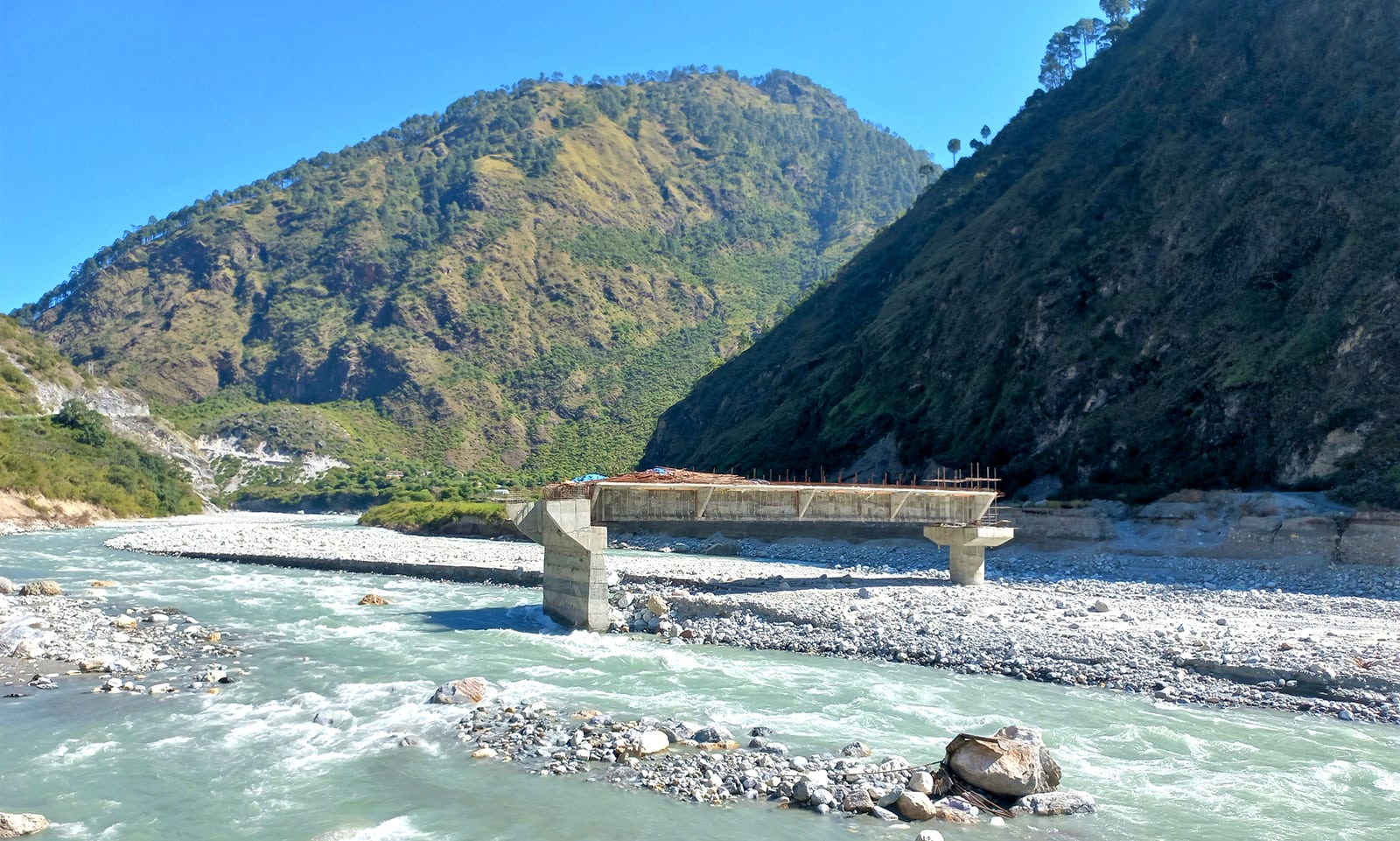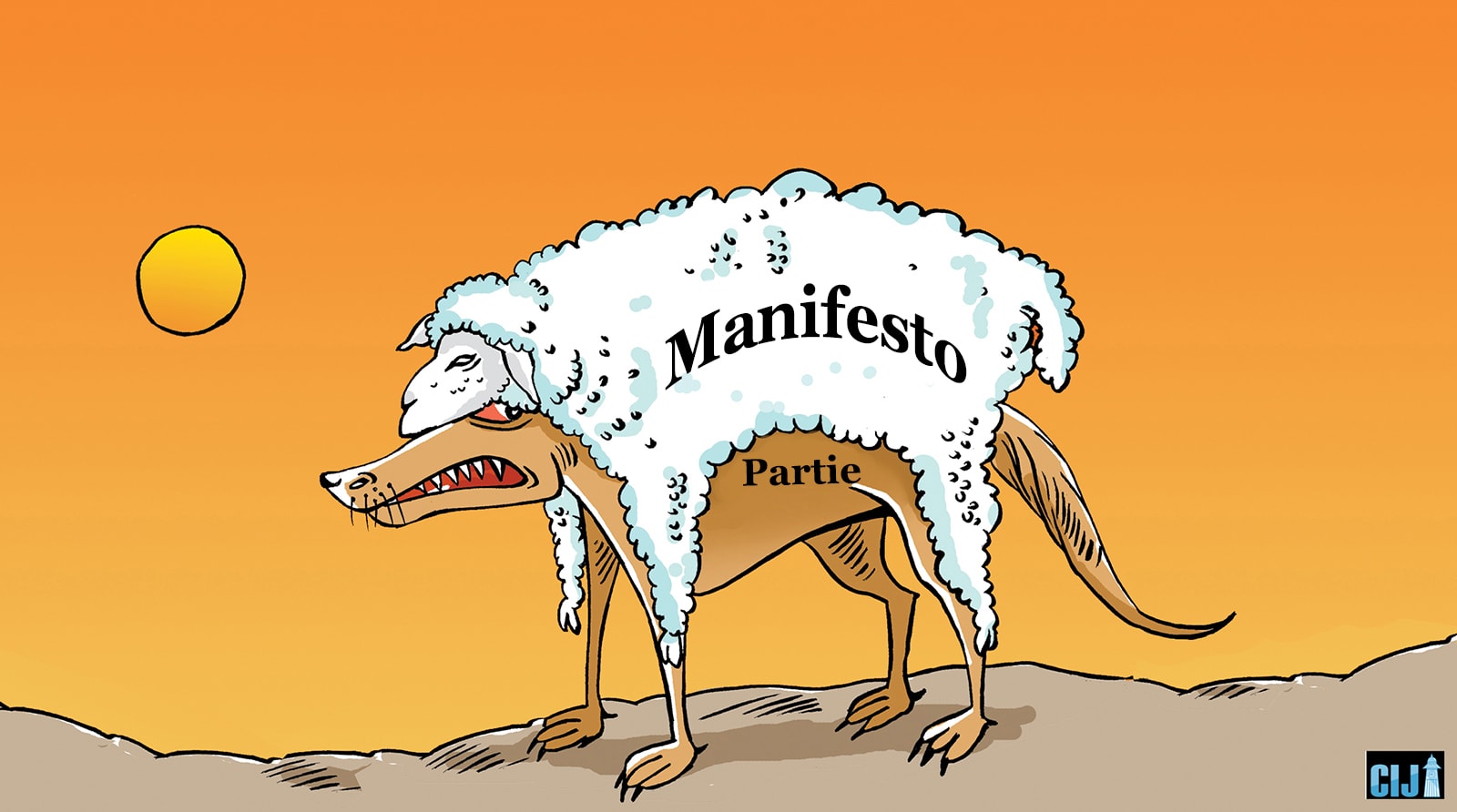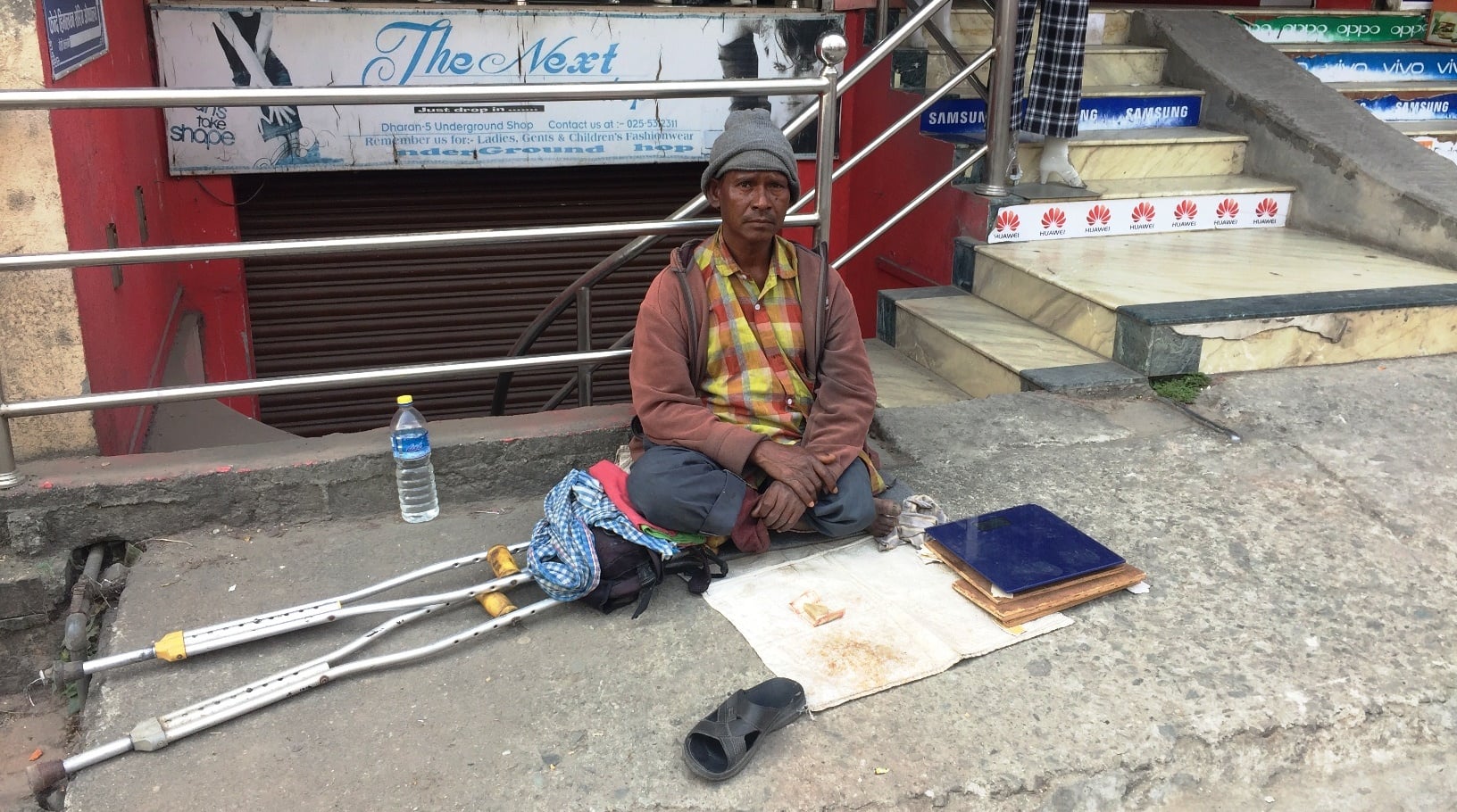A building spree continues in the public open spaces of Kathmandu. Elected local representatives have not woken up to the continued encroachment of spaces that are essential refuge for the general public in times of disaster such as earthquake.
Makar Shrestha: Centre for Investigative Journalism-Nepal
- The foundation stone was laid at the Old Bus Park in Kathmandu on November 10, 2015 for building a tall multi-purpose structure. After the bus park was shifted to Khula Manch, or the open theatre, the space meant for political rallies and for the meeting point of strollers has now turned into a parking venue. The popular hangout of the residents of the old settlements of Ason and Indra Chowk and their vicinity and a refuge at times of disaster has also been a site to store goods for the nearby Bir Hospital. Many had seen local residents spend their nights at the bus park and the Khula Manch in the aftermath of the April 25, 2015 earthquake. Sadly, there are no voices of opposition today when this public space is fast disappearing.
The Kathmandu Metropolitan City (KMC) is constructing a commercial building at the Old Bus Park, tall enough for people to catch sight of the Valley. According to an agreement reached with the metropolis and Manoj Kumar Bhetwal of the Jaleshwor Swochchhanda Bikoi Builders Company, the developer can use the property for 30 years after construction. The tower will have amenities such as recreation hall, conference hall, financial institutions, museum and a library. As rent for the land, the KMC will earn Rs 26.5 million annually. But residents near Bagbazaar have lost for ever an open space in their neighbourhood crucial for taking shelter in the event of a disaster.
- In a notice published on the Nepal Gazette on April 7, 2013, the Council of Ministers designated the ground belonging to Madan Smarak Secondary School in Pulchowk, Lalitpur, a “public open space”. But nine months before that, an agreement had been reached on building a business complex on 13 ropani 1 anna of the 32 ropani land owned by the school. The school management had, on July 4, 2012, leased 10 ropani 1 anna land to Valley Construction for use for 40 years. Ten years ago, the school had leased three ropanis of its land to Classic Developers for 25 years. Headmaster Govinda Poudel said, “It was a football ground. We’ve signed deals to construct buildings [there].”
The contractor has readied the land for digging before laying the foundation by covering it with corrugated iron sheets. Students at the Madan Smarak School, who have lost their playground, will now have to write and study under the shadow of gigantic buildings. Youths and other students from the vicinity of Pulchowk will no longer be able to play football on the Madan Smarak ground.
The school earns Rs 400,000 from the 10 ropani land and Rs 60,000 from the three ropanis annually. According to headmaster Poudel, the contractors have agreed to pay Rs 4 million for the 10 ropanis and Rs 700,000 for the three ropanis annually once the building designs are approved.
This deal has robbed residents of Lalitpur Metropolitan City Wards 3 and 20 of the nearby strolling ground and place of refuge in times of disaster. Students here have had to forgo their playground–an inseparable part of their daily life. Then-chairman of the school management committee Rajkaji Maharjan had decided to rent the school ground.
- A building constructed on 12 ropani land belonging to Mahendra Adarsha Vidyashram Secondary School at Satdobato houses the Salesbury Department Store. This ground owned by a trust has been leased to Jyapu Company for a monthly rent of Rs600,000. The Kathmandu Valley Development Authority (KVDA) had listed this school ground as an open space. According to Principal Krishna Datta Joshi, the land was leased for 30 years in order to run the school and build infrastructure necessary for it. The school run by an educational trust does not get the government grant so the space had to be used for commercial purpose to pay the teachers, according to Joshi. Lalitpur Constituency 3 people’s representative Pampha Bhusal is the main trustee of the school.
The structures built at the Old Bus Park and Khula Manch in Kathmandu and Madan Smarak and Mahendra Adarsha Vidya Ashram schools in Lalitpur are but a few examples of open spaces being used up for commercial purposes. Such structures have already been erected at hundreds of places in the Capital while construction works are underway in several places.

3 Ropanis of land of badminton court of Madam Memorial School in Pulchowk,Lalitpur. This land has been leased for 24 years for commercial building.
The public importance of open spaces, which are essential at normal times including for students and a must in the event of a disaster, are immense. Realising their value, the government designated 887 spots as open spaces three years ago. Among such spaces identified by the KVDA, 488 are in Kathmandu, 346 in Lalitpur and 53 in Bhaktapur. Patches of public land; premises of schools, colleges and hospitals; and riverbanks have been recognised as open spaces. Among the 887 spaces in total, 83 were listed in the Nepal Gazette as “public spaces” five years ago. Government’s decisions published in the gazette are treated as law but these excesses over public areas continue unabated.
According to the basic guidelines on building settlements, urban planning and construction issued by the government post earthquake, construction of structures has been banned on open spaces. Public, uncultivated and unregistered land areas are also open spaces.
Construction of structures on public spaces is driven by commercial and financial interests. These deals are publicised as efforts to mobilise funds for the benefit of children and the general public but a deeper look reveals underlying massive financial and personal interests. Local representatives, political party workers and some serving their personal interests have a role in such decisions. The biggest damage done by personal interests of a few individuals is to open spaces near dense settlements.
Declared open space, the land registered in the name of Nepal Scouts in Lainchaur is used for catering. Plans are afoot to rent the remaining area as well. The National Trading property on Ramshah Path, Putalisadak, has been rented to a catering group while the land owned by the airport (Hawai Adda) in Gatthaghar, Lalitpur, is leased by a garage operator.
Plans have been made to sell the land belonging to the Harisiddhi Bricks and Tile Factory in Lalitpur. While establishing the factory in 1965, the government had acquired 412 ropani land from local farmers paying them Rs 1500 per unit. An apartment project is learnt to have been planned on the land listed as an open space.
‘Where to find shelter in a disaster?’
The ‘Kathmandu Valley Open Space Roadmap’ published by the KVDA three years ago presents a comparison between the state of open spaces in 1980 and 2012. According to the report, public open spaces accounted for 2.29 per cent of the total land area in the Valley while the share fell to 2 per cent five years ago. Areas facing most visible encroachment are the banks of rivers and streams. The total riverside area accounted for 3.38 per cent in 1980 while it had shrunk to 1.98 per cent in the following 32 years.

Building and Stadium around Army Officers Club built without taking approval for map design.
Amid an increasing encroachment of open spaces, the Sushil Koirala government introduced a plan to conserve such areas in Kathmandu Valley in its programmes and policies for the fiscal year 2014-15. An announcement was made to build parks with open spaces in 10 locations. A policy of having an open space for every 25,000 people in all the municipalities was devised. According to the annual programme, municipalities would get capital grants for the project.
The stated policy was to take park building in urban areas as a campaign attaching high priority to conservation of public land for better environment. Gardens and playgrounds would be built in several places of Kathmandu Valley. Sadly, no funds were set aside in the following budget announcement. When the government could not enforce conservation measures, it was easier for individuals and organisations to encroach upon open spaces.
“Encroachment of public areas has not stopped. I spoke in Parliament against the plan to build a tower at the bus park,” said lawmaker-elect from Kathmandu-6 and Defence Minister Bhimsen Das Pradhan. “The government had seen local residents take shelter there. It’s being wiped out before another disaster strikes.”
The Nepal Army has erected a building in front of the Kathmandu municipal office. Deputy Mayor Hari Prabha Khadgi had appealed to the defence minister to stop the construction. “I’ve talked to the Army leadership saying that there would be no space left for shelter during a disaster when such structures are built in quick succession,” said Minister Pradhan. But the Army is not going to heed calls of the defence minister. The national defence force is building the structure even without getting its design approved. The Army is building a new structure even on the Army Officers Club premises. Buildings are being constructed one after another inside Singha Durbar where people spent time in the aftermath of the 2015 earthquake. The Social Welfare Council has been using the Brikutimandap ground for commercial purposes by paving it. Exhibitions are held there frequently by setting up temporary structures.

Football ground of Madam Smarak School in Pulchowk, Lalitpur. Commercial building is in going to be built in this area.
On the Madan Smarak ground in Pulchowk, between 1,500 and 2,000 people had taken shelter after the earthquake. Local resident Uttam Maharjan vented his ire at the deal to construct a commercial complex there. He remembers how people from 10 localities of three wards poured onto the ground for shelter during the tremors. “There would have been problems if not for this space. Where shall we find refuge in a disaster when the school ground is leased to build tall structures?” Maharjan wonders. “At a time in the past, the local residents gave away their paddy fields to open the school. Why should that land be leased now?” an agitated Uttam said. “Our relatives did not give their land for this.”
Now the only open area that remains in Lalitpur Metropolis Ward 20 is a pond. Local residents pressed the school not to lease the land. They are worried after the Supreme Court ruled in favour of the deal. The Valley Construction Company is bent on robbing Madan Smarak students of their playground. Luring the school management committee and the headmaster with its promise to build the school gate, among others, the company is rallying them behind its vested interests.
‘Irreversible trend’
People’s representatives recently elected to offices at the local, provincial and federal levels have not made conservation of open spaces their priority even as commercial buildings are being erected on open spaces. Local representatives, who should be most receptive of people’s concerns, are also silent on the issue. Since voters in general are not alarmed unless a major disaster strikes, the local representatives are not pressed on the conservation agenda. People pursuing their interests have benefitted from this situation.

Department store building constructed in 12 Ropani land of Mahendra Adarsha High School in Satdobato, Lalitpur.(White Building) Photo: Ashok Dulal
In the Lalitpur-3 federal parliament constituency of CPN (Maoist Centre) leader Pampha Bhusal, a huge commercial building has been built on the ground of the Satdobato-based Mahendra Vidya Ashram. The school management argues that they are earning by leasing the ground being used by students for sports. Lawmaker Bhusal argues that the school still has land to be used by local residents in times of disaster. She says the school is being run with the money received from commercial use of the property.
Bhusal is not a lone people’s representative who defends loss of open spaces to physical infrastructure. Kathmandu Deputy Mayor Hariprabha Khadgi claimed that building a 12-storey structure at Old Bus Park would have no effect in its vicinity. She said that she had protested the plans to build a 29-storey building but she supported the revised plan to construct a 12-storey building. Claiming that the metropolis was actively working to conserve open spaces, she shifted the blame on others. “It shows that local government’s efforts alone do not suffice,” said Khadgi. “There has to be support also from the central government.”
Lalitpur Metropolis Mayor Chiribabu Maharjan says it is his priority to save open spaces. “Whatever the losses before, we won’t allow any further damage,” he said. “As far as possible, we’ll stop construction on open spaces that have been leased earlier.” Maharjan will keep his promise if he can save the Madan Smarak ground adjacent to the municipal office.
Bhaktapur Municipality Mayor Sunil Prajapati was clear on the idea that open spaces should be left open. “Our ancestors had created meadows as required while creating the city. Open spaces are essential also for breathing in fresh air,” said Prajapati. “In all its residential projects, the municipality has spared open grounds for disasters and for sunbath.”
Prajapati said the earthquake two years ago had been a lesson to them to preserve open spaces. “We can’t imagine where we’d have taken shelter had there not been open grounds,” he said. “We’re committed to conserving open spaces also due to that experience.”
18,000 ropanis devoured
The government conducted a study 24 years ago of land encroachment in the area currently covered by the Kathmandu Metropolitan City. On October 7, 1993, a “High Level Commission on Government and Public Land Probe and Conservation” was formed. According to the report submitted by the commission to the government after two years of study, 1,859 ropanis or 9.81 per cent of the total 18,941 ropanis of the then Kathmandu urban area was encroached upon.

Old Bus Park,Kathmandu
The report showed 115 ropani land encroached upon in teh erstwhile Ward No 5, Handigaun, while 222 ropanis was encroached upon in Ward No 6 Bouddha. The probe found that government and public land near Bishnumti, Bagmati, Dhobikhola and Manohara rivers mostly faced encroachment.
However little, some study has been conducted in Kathmandu but there has been no investigation into land encroachment in Bhaktapur and Lalitpur districts. The regulatory body does not seem to be concerned about it. When Lokman Singh Karki became the chief of the Commission for Investigation of Abuse of Authority, even free open spaces came under attack. For instance, when political party representatives encroached upon Nakhkhu Khola while constructing the Nakhkhu corridor, the National Vigilance Centre took the District Development Committee staffers to task in writing. But no official or party worker faced action.
Advocates Prakash Mani Sharma and Kavita Pande filed a case in the Supreme Court seven years ago demanding that the encroached land be reclaimed as public property. A division bench of Justices Tap Bahadur Magar and Mohan Prakash Sitaula issued a directive order to the government on May 26, 2010 to implement the report by forming an experts’ committee.
The order said: “As it is deemed necessary to take legal measures on the basis of probe into cases of encroachment upon government and public land elsewhere in the country, this directive order has been issued in the name of defendants to jump into action urgently and with priority.” The government had formed an expert committee chaired by a secretary at the Office of the Prime Minister and Council of Ministers to implement the order but there are no reports of the committee undertaking its task.
Paper works
After the 2015 earthquake, the government issued the “Action Plan for Long-term Development of Kathmandu Valley”. Citing that people in the city were compelled to take shelter by setting up tents on the road, farmland and riverbanks in the absence of open spaces, the Kathmandu Valley Development Authority prepared new standards, which say each ward will have at least five per cent of its total area as open space.

Capital’s Khulamunch(Auditorium)
The action plan mentions identification of potential open spaces in densely populated areas with support from the local community for emphasis on their protection and promotion, making public of open space maps prepared for each ward, and designation of open spaces for a particular community for emergency situations. It also states that commercial party palaces, futsal and tennis courts, driving training areas, and parking spaces would be accessible to local residents in times of crisis. The plan also said the Government of Nepal would be requested to put an end immediately to the practice of providing government land within the Valley for professional and community organisations.
“Public land areas in one’s sector will have to be developed into green patches and gardens by declaring them as open spaces,” says the action plan. “No public land shall be recommended for ownership transfer or use by any one for any purpose.” But no local people’s representatives or government agencies seem to be serious about implementing this action plan.
 Open areas are the lungs of the city which has houses all around. Since open areas are the places where people get to inhale air for relaxation, they may be called the lungs of the city. Open areas have huge importance also from the perspective of environmental balance, urban aesthetics and socio-cultural values. Since festivals like Lhosar, Chhath, Holi and Jatras are celebrated in open areas, the spaces are linked to culture.
Open areas are the lungs of the city which has houses all around. Since open areas are the places where people get to inhale air for relaxation, they may be called the lungs of the city. Open areas have huge importance also from the perspective of environmental balance, urban aesthetics and socio-cultural values. Since festivals like Lhosar, Chhath, Holi and Jatras are celebrated in open areas, the spaces are linked to culture.
People need open areas for staying healthy. They are also important economically: open areas add value to land. Take Narayanchaur in Kathmandu and Khumaltar in Lalitpur for example. Property around the park is priceless as the areas improve the lifestyle of people living nearby. The spaces are useful for exercising regularly, sunbathing and as playground for children and places for recreation.
Open spaces are of two types: one with lawn and the other paved with bricks or stones. Open areas are meeting places which also make cities liveable. Which areas need to be left open, what area of land has to be freed up for a given population and whether spaces have to be used as playground, garden or park have to be determined.
A park needs basic facilities such as toilet, resting place, dustbin and footpath that meet the requirements of people of all ages and classes and those with disability. Most importantly, local communities need to be made aware of, and held responsible for, these concerns.
The existing open areas can be managed as parks. For areas without open areas, there has to be a policy of managing spaces. The earthquake two years ago taught us deeply the importance of open spaces. After the disaster, the Kathmandu Metropolitan City put forth a plan to conserve open spaces and create new ones. The plan was to free up areas even by buying land. Unfortunately, even existing areas have not been managed, let alone create new spaces.
The WHO and the Food and Agriculture Organisation have said a nine square metre area is necessary for a person. According to the Periodic Plan of the Municipalities, Kathmandu has only 0.25 square metre open area per person. The free area is 0.33 sq metres in Birgunj, 0.06 sq metres in Lalitpur and 1.49 sq metres in Biratnagar while it is 4.34 sq metres in Dharan. In India, 20 per cent land area remains open in New Delhi, 35 per cent in Chandigarh and 2.5 percent in Mumbai. In Kathmandu, only 0.48 per cent area is open.
According to a plan drafted by the government, there has to be at least five per cent open area in the city. Our study requires it to be at least 10 per cent. If plans were enforced, this country would be different. There is no clear policy on open spaces and parks. There is no accurate data on open spaces; areas have not been freed up as planned.
Open spaces vary in areas, wards and cities. Plans have to be made accordingly. In old cities, open areas and ponds have been provisioned. There is a chowk in front of houses, there is open area outside a Tole. The Durbar square is at the city centre.
New cities, built haphazardly, don’t have these all. There’s no space for breathing in fresh air. Development has to follow plan but it is the other way round in our case. Settlements are growing but there is no open space in proportion, nor discussion on its importance. The case becomes alarming when we compare the open spaces in 1980 and 2012. From 2.29 square kilometres in 1980, open spaces shrunk to 2.01 sq km in 2012. From 38.03 sq km in 1980, settlements grew to cover 118.65 sq kilometres five years ago. Cultivable land shrunk to 342.08 sq km from 421.63 sq km.
It’s been difficult to expand open spaces now. The population in the Valley is growing by leaps and bounds. Parks had to be created to suit the needs of all the castes and communities. Whatever area had been left free as Baha in old settlements has been used up as parking space, robbing children in the vicinity of their play space. For instance, Tebahal has been converted into a parking lot. A park had been planned there but it would generate no income for the local club as from parking. The plan did not move ahead due to opposition.
Such spaces are meant for cultural programmes, children’s playground, and meeting and party venues. In some chowks, buildings have been erected; public places privatised.
In new settlements, no spaces have been set aside as in old areas. In fact, there has been no addition to the open space area. As every single anna of land is rated too high in Kathmandu, people choose to go to gym for exercising rather than do it in the open. Since children have nowhere to play, they are confined to a corner of a room, busy using gadgets and without touch with the community. Open spaces are essential for physical, mental and social reasons. It has been necessary to conserve open spaces even by relocating structures built on them. For this, local representatives should be most mindful.
(Based on conversation with Maharjan, who studied the state of open spaces in Kathmandu last year.)



